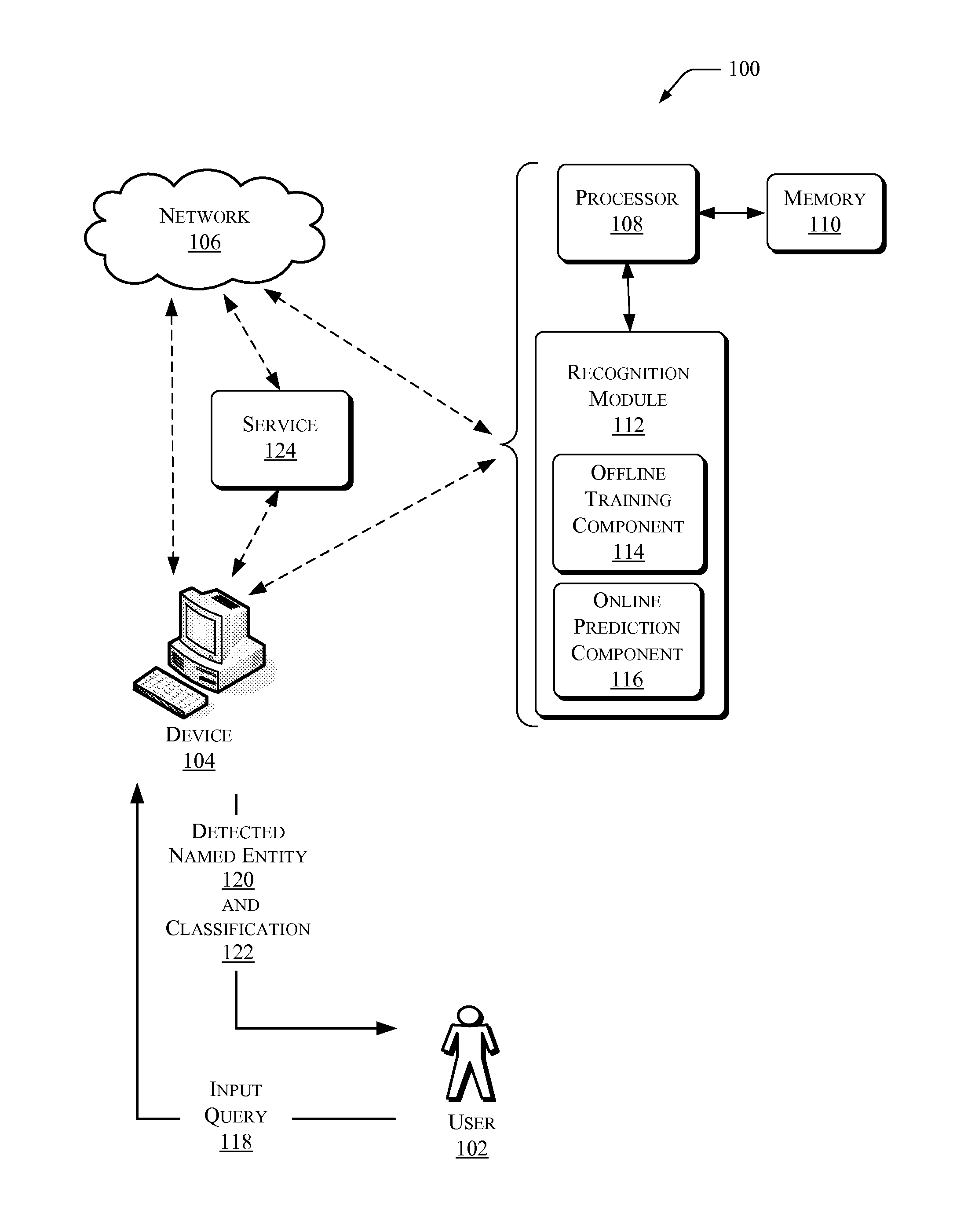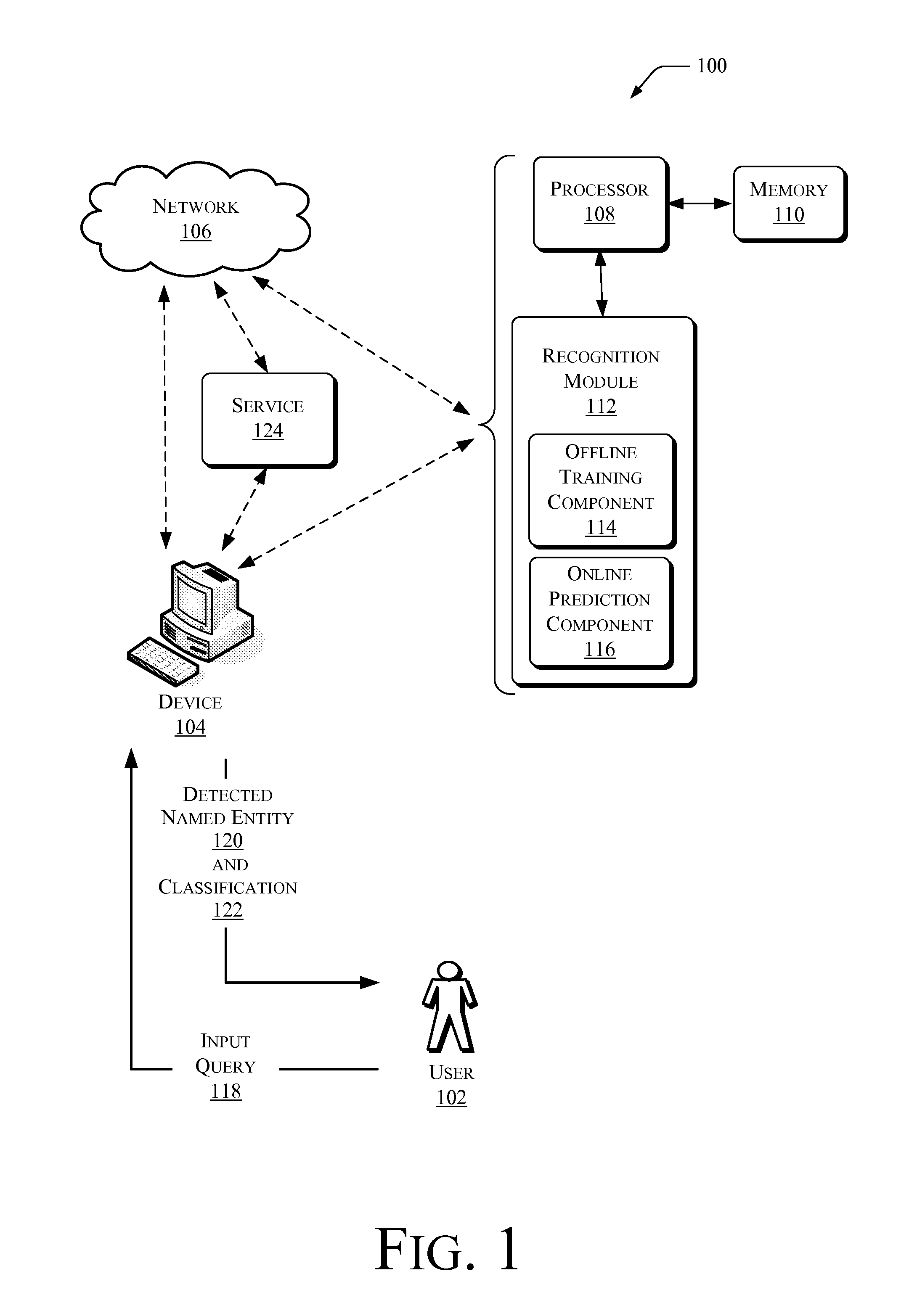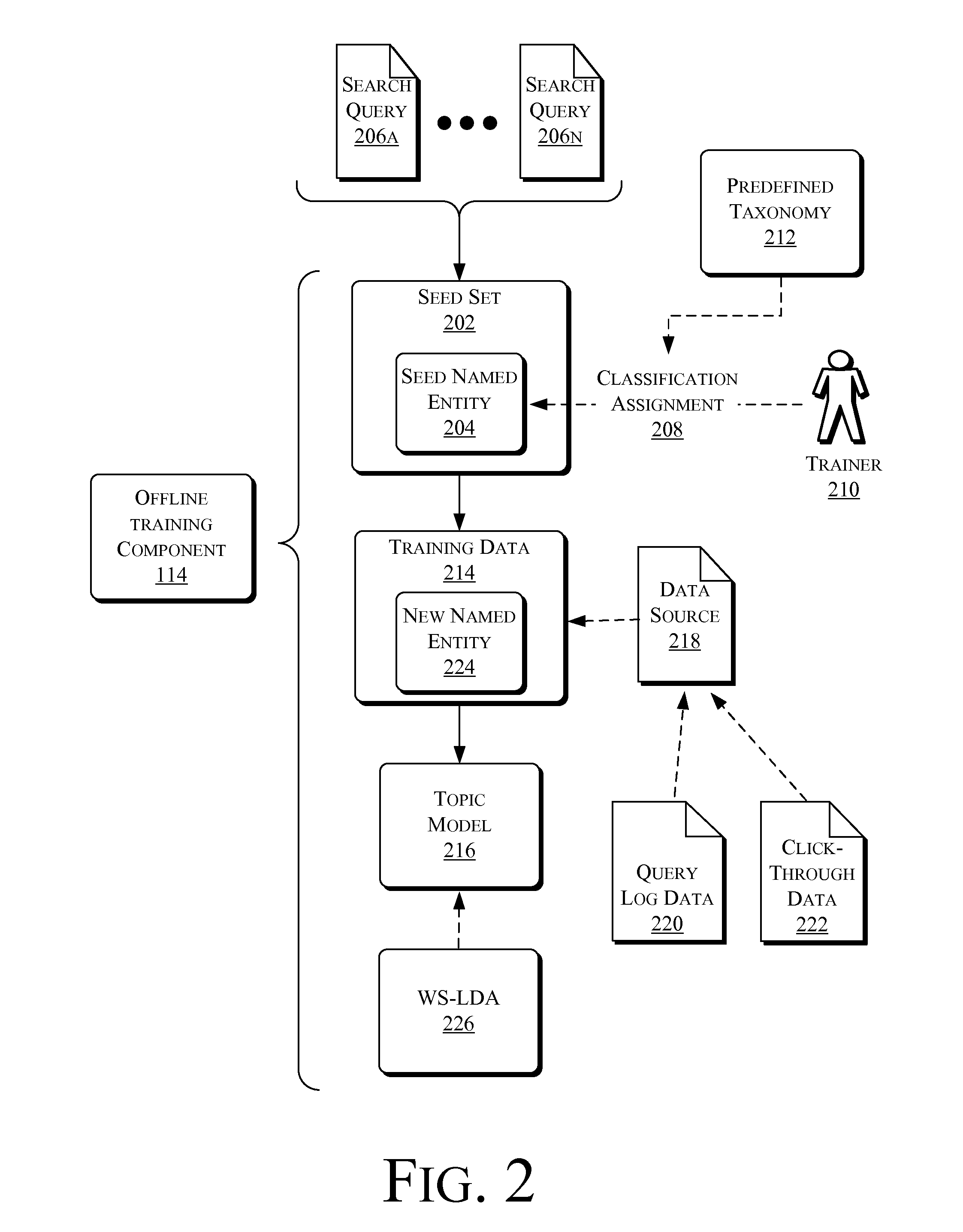Named Entity Recognition in Query
- Summary
- Abstract
- Description
- Claims
- Application Information
AI Technical Summary
Benefits of technology
Problems solved by technology
Method used
Image
Examples
Embodiment Construction
Overview
This disclosure describes systems, techniques, and methods of recognizing named entities in a query and classifying the named entities with one or more classes (labels) as appropriate. Given a query, such as a search query, the systems and / or methods described herein may be employed to detect a named entity within the query and identify or predict a most likely (probable) class or classes of the named entity. A query as used in this disclosure will often be described in terms of an input query to a web-based search engine. However, this is for simplicity of explanation, and does not limit the term query to that use. As used in this disclosure, the term query applies to any type of query, including those used in various applications for various types of inquiry or searching functions, including, for example, queries used in database applications, cataloging applications, or encyclopedia-type applications.
A named entity within a query may be a name within the query that indica...
PUM
 Login to View More
Login to View More Abstract
Description
Claims
Application Information
 Login to View More
Login to View More - R&D
- Intellectual Property
- Life Sciences
- Materials
- Tech Scout
- Unparalleled Data Quality
- Higher Quality Content
- 60% Fewer Hallucinations
Browse by: Latest US Patents, China's latest patents, Technical Efficacy Thesaurus, Application Domain, Technology Topic, Popular Technical Reports.
© 2025 PatSnap. All rights reserved.Legal|Privacy policy|Modern Slavery Act Transparency Statement|Sitemap|About US| Contact US: help@patsnap.com



